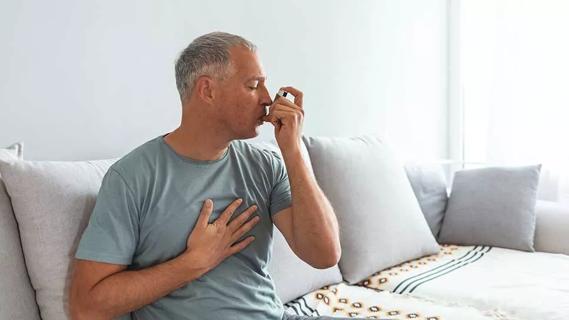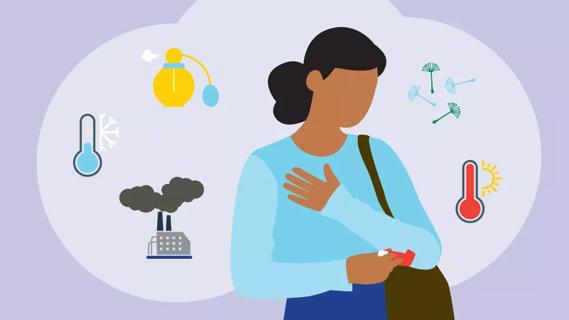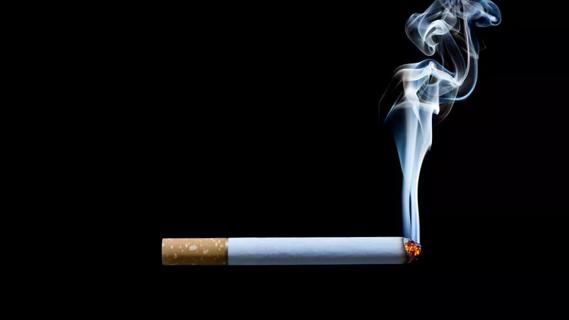Advertisement
The right treatment starts with the right diagnosis

If you suffer from ongoing shortness of breath or frequent lung infections, there are many possible culprits — including cysts in your lungs that could lead to cystic lung diseases.
Advertisement
Cleveland Clinic is a non-profit academic medical center. Advertising on our site helps support our mission. We do not endorse non-Cleveland Clinic products or services. Policy
The challenge for patients and doctors is to nail down a specific diagnosis. Getting the right treatment depends on it. However, doing so is complicated. There are more than half a dozen categories of cystic lung diseases and they have many potential causes and presentations.
“Some cystic lung diseases are the result of infection in the lung, an underlying lung disease or disease of the whole body that has manifestations in the lung,” says pulmonologist Peter Mazzone, MD, MPH.
Some cystic lung diseases relate to other problems in your body. For example, Birt-Hogg-Dubé syndrome leads to disease in the lung and tumors on the kidney. Smoking is another connection, too, much like other lung conditions. These include interstitial pneumonia and pulmonary langerhans cell histiocytosis.
Many other causes of cystic lung disease have no link to any particular behavior or cause. There might be a congenital or genetic reason why someone develops a specific condition, instead.
“The symptoms vary, too,” says Dr. Mazzone. “For example, a cystic lung disease known as lymphangioleiomyomatosis (LAM) can present with collapse of the lung. This occurs when a cyst erupts, leading to air leaking out of the lung.”
If you experience progressive shortness of breath, frequent lung infections or any other lung condition that can’t be explained otherwise, see your primary care provider. They may want to order a scan of your lungs.
“All this variety can make getting a diagnosis challenging,” says Dr. Mazzone. “Cystic lung diseases are also rare. That makes it unlikely that patients would be aware of them and bring them up with doctors.”
You can help reach the right diagnosis by watching for common symptoms like progressive shortness of breath, frequent lung infections or any other lung condition that can’t be explained otherwise. If you experience any of these symptoms, see your primary care doctor. They may want to order a scan of your lungs.
“If cysts show up on the scan, your doctor should refer you to a pulmonary specialist,” says Dr. Mazzone. “The pulmonologist will be equipped to detect and diagnose your specific condition so you can get the treatment you need.”
If you have recurring infections, your doctor may want to remove frequently infected cysts. Surgery might also be necessary for congenital lung disease if a section of your lung didn’t develop normally and is prone to infection and bleeding.
Advertisement
“For cystic lung diseases, there’s no one-size-fits-all approach,” says Dr. Mazzone. “Treatment may involve smoking cessation, medications or surgery, or a mix of these. It depends on your underlying condition.”
Specific treatments aren’t always available when the disease is genetic in nature. Still, knowing about the disease is useful to guide screening for other family members who may be at risk.
“Some patients progress to the point where they need a lung transplant,” he says. “Most cases don’t progress that far, though. Depending on the disease causing the cysts, some patients benefit from treatment with a immunosuppressant drug, which helps slow the development of cysts that are part of the disease.”
Advertisement
Learn more about our editorial process.
Advertisement

A change in diet won’t cure COPD — but getting to or maintaining a healthy weight will help

Vaping exposes you to thousands of chemicals, including many that cause cancer and lung disease

Both conditions have similar symptoms, but different causes and treatments

You can reduce your chances of a flare-up by quitting smoking, avoiding respiratory infections and following your doctor’s orders

Even only a couple cigarettes a day can lead to potentially deadly lung diseases like COPD and emphysema

Your risk goes down once you quit, but you may still need a lung cancer screening

Get improved quality of life and breathe better

The effectiveness and safety of many of these options are unknown, so it’s best to stick to traditional care

Focus on your body’s metabolic set point by eating healthy foods, making exercise a part of your routine and reducing stress

PFAS chemicals may make life easier — but they aren’t always so easy on the human body

While there’s little risk in trying this hair care treatment, there isn’t much science to back up the claims